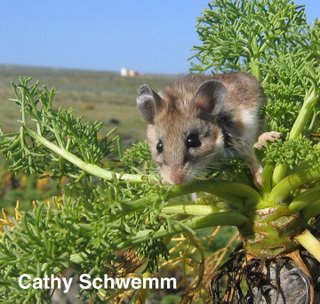
Island foxes are found on six of the eight Channel Islands off the coast of southern California. (Where does the island fox live? What is an island fox? Experiencing Santa Cruz Island )
A pair of San Clemente island foxes at the Santa Barbara Zoo. (Where can you see an island fox?)
Island foxes all have similar lifestyles and habits:
- About the island fox
- Males consistently weigh more than females
- What do island foxes eat? Their favorite food is the deer mouse. (Each island has its own subspecies of deer mouse.)
- Island foxes are good climbers, which allows them to reach bird nests and eggs
- Island fox pups are born in the spring. Island foxes usually have 2-3, but may have as many as 5 pups

But the foxes on each island are slightly different from each other. The differences are great enough that each island has its own subspecies of island fox.

National Park Service biologist Tim Coonan points out that the San Miguel island fox weighs significantly more than the island foxes on the neighboring island of Santa Rosa.
A San Miguel island fox being fitted for a radio collar.
A pair of Santa Rosa island foxes. (Experiencing Santa Rosa Island)

Tail length is a specific physical trait that varies between the different subspecies. Studies show island foxes from different islands have more or less tail vertebra.
In descending order:
- San Nicolas Island 22 tail vertebra
- Santa Catalina Island 21 tail vertebra
- San Clemente Island 19 tail vertebra
- Santa Rosa Island 19 tail vertebra
- Santa Cruz Island 19 tail vertebra
- San Miguel Island 15 tail vertebra
All of the island fox populations are vulnerable because they live in such limited habitats. Small population numbers mean that a single introduction of a disease, like the canine distemper outbreak on Santa Catalina Island, can threaten an entire island fox population. (Santa Catalina island fox Update) Catastrophic events, like the arrival of an unexpected predator–the golden eagle–can cause near extinction.
The island foxes on San Miguel Island were reduced to only 15 individuals because of predation by golden eagles. This genetic bottleneck means future San Miguel Island foxes will be more genetically alike than they were in the past.
Conservation and research efforts are necessary across the islands to preserve and protect the six subspecies of island foxes.
Donations to Friends of the Island Fox supports conservation and education efforts to Help Save all six subspecies of island fox. See how your donations can make a difference.
